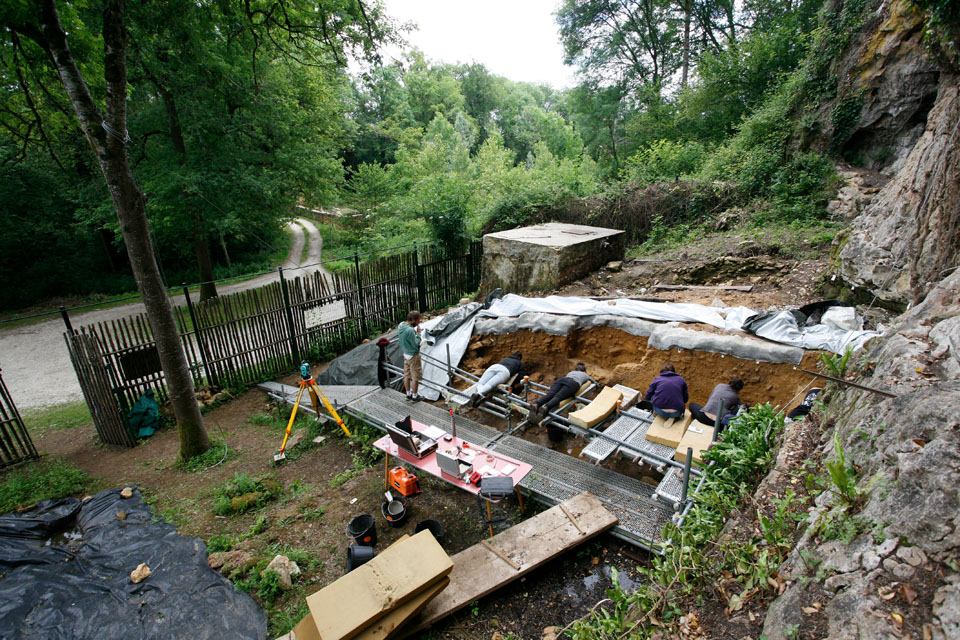The site of Le Piage was well known by local researchers and amateur archaeologists, but it was not until 1958-1968 that systematic excavations were undertaken by F. Champagne and R. Espitalié. The sequence uncovered at Le Piage is considered to be very important for the interpretation of the transition from the Middle to the Upper Paleolithic. The original interpretations of the stratigraphy concluded for the contemporaneity of Neandertals and early modern humans at the site. This was based on purported alternations of stone tool industries in stratigraphy. However more recent excavations have since demonstrated that this apparent contemporaneity was, in fact, the result of solifluction (gradual movement of wet sediments over a frozen substrate) that caused mixing of two distinct layers. Despite these problems, which are limited to a single area of the excavation zone, Le Piage remains an important site. Starting in 2005, Jean-Guillaume Bordes (Université de Bordeaux) and Foni Le Brun-Ricalens (Musée National d’Histoire et d’Art, Luxembourg) have renewed excavations at the site.

Excavations at La Piage
Ongoing Research
One of the first goals of the new excavations at Le Piage has been to determine the stratigraphic connection between the north and south sections of the site. Le Piage contains large faunal assemblages, although bone preservation varies across the site. The Early Aurignacian fauna is similar to what is seen at other comparable archaeological sites and is strongly dominated by reindeer (Rangifer tarandus). Our work at Le Piage also evidenced a mixed Solutrean-Badegoulian occupation (these two occupations are dated to 19,000 and 18,000 years ago, respectively). As is the case for the Early Aurignacian, reindeer dominates the sample derived from this layer. Signs of carnivore involvement are rare throughout the sequence, indicating that humans were the main accumulators of faunal remains at Le Piage.

